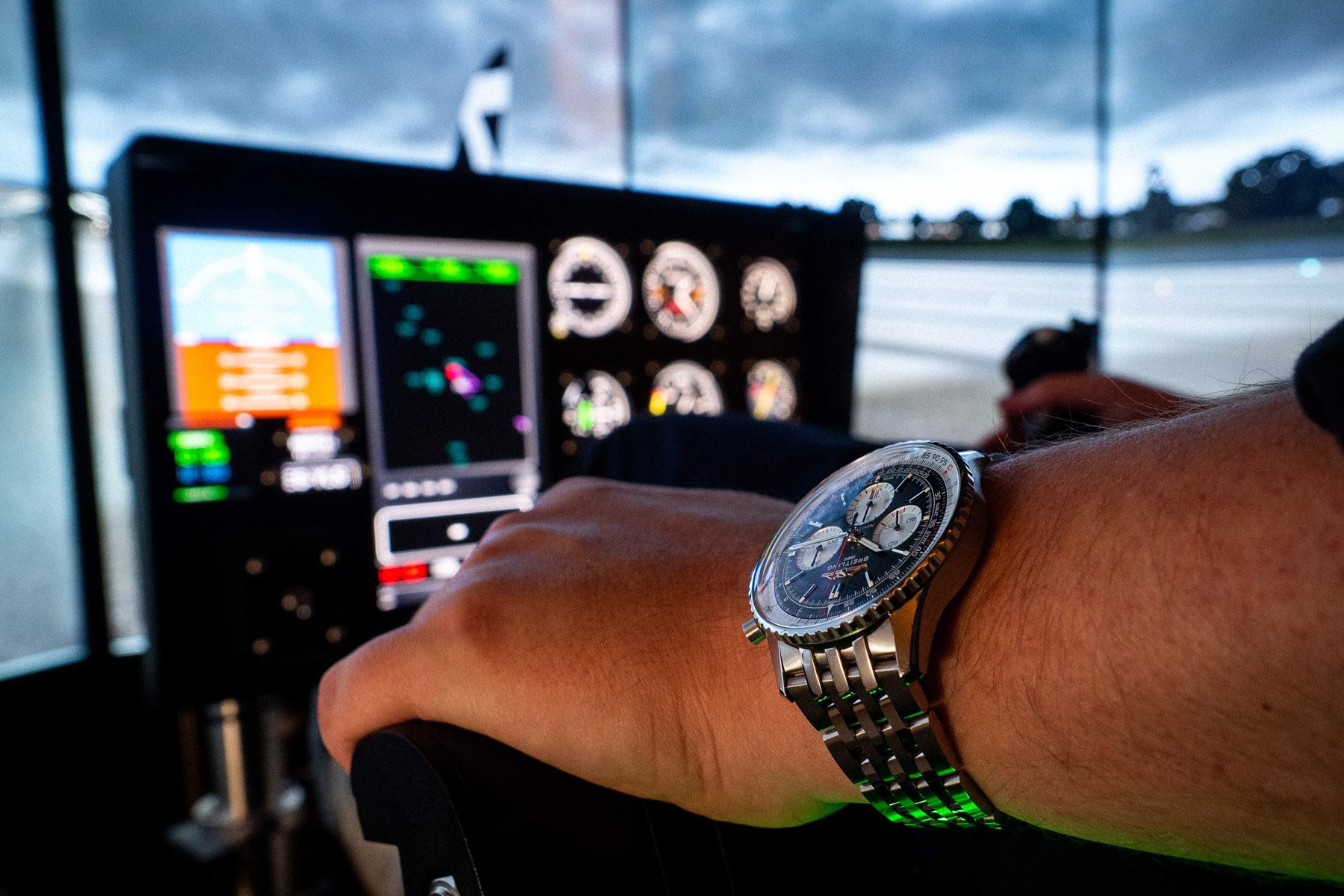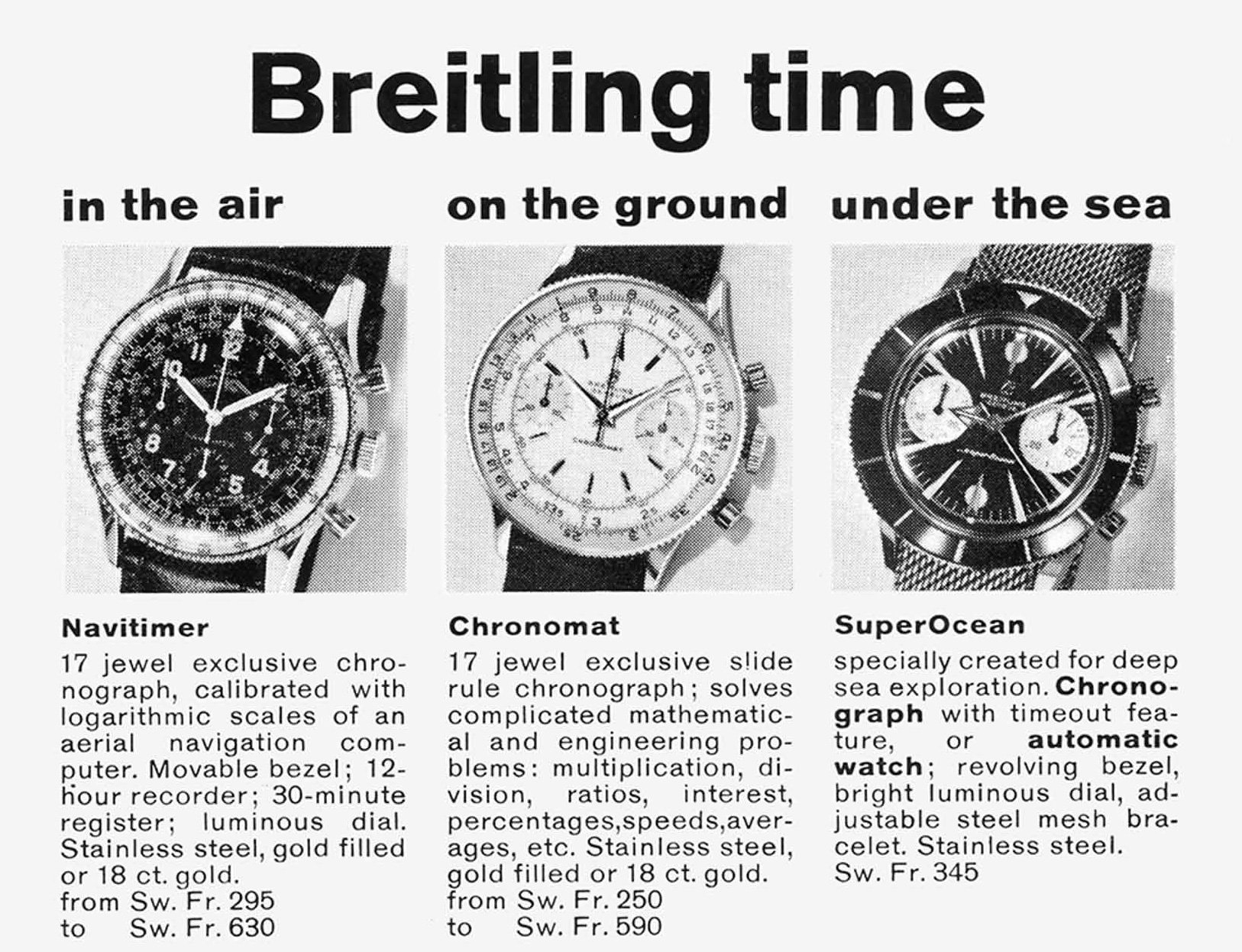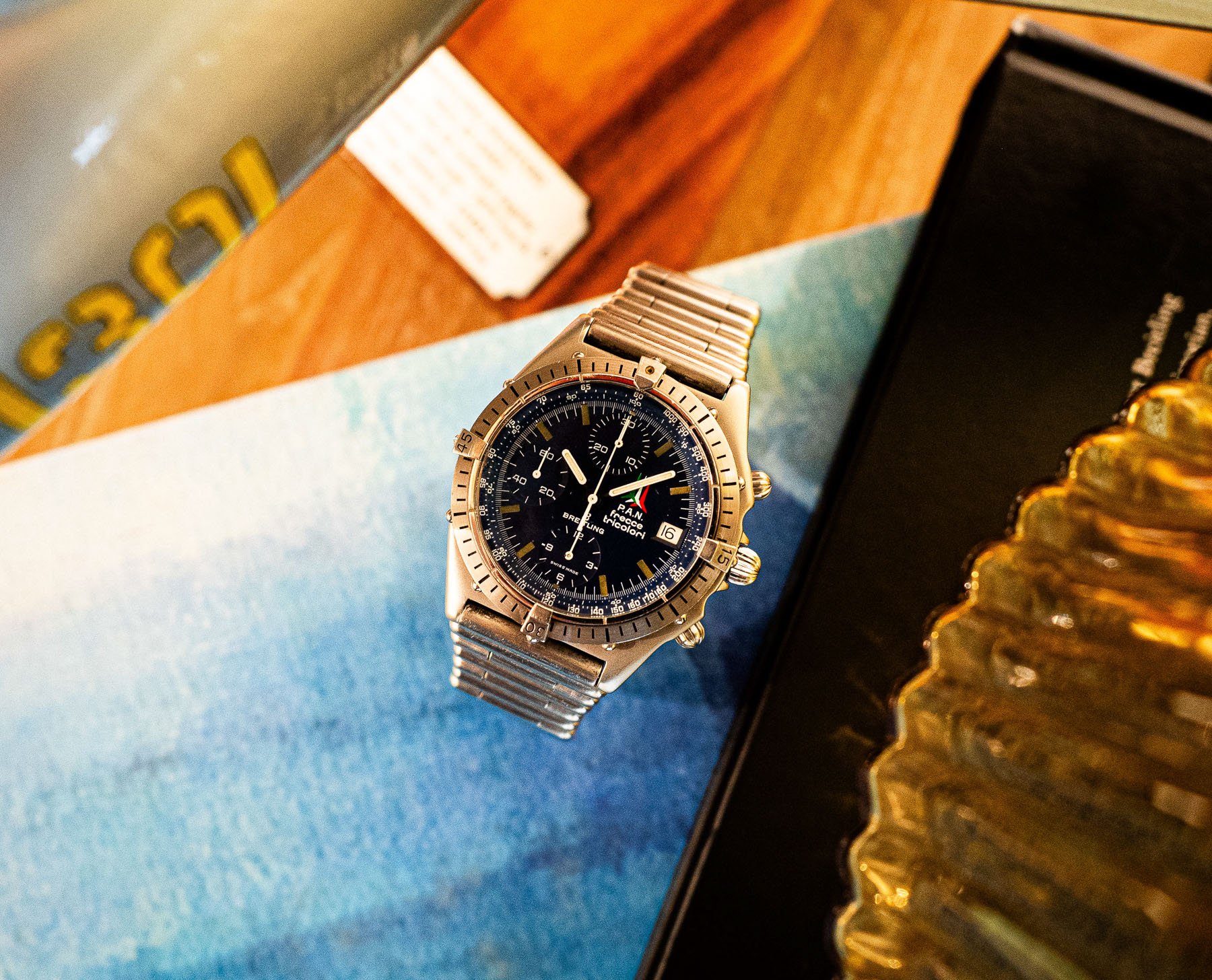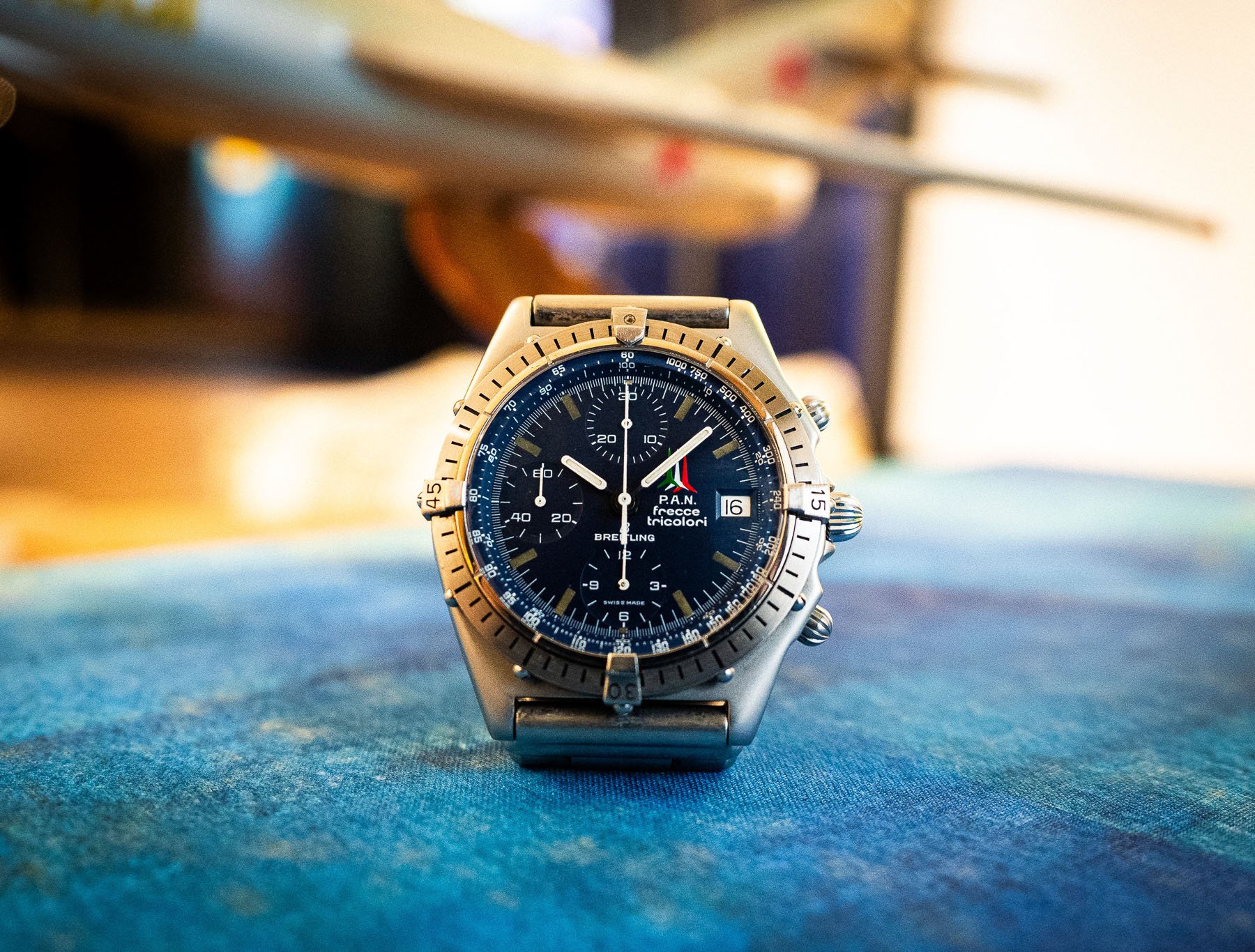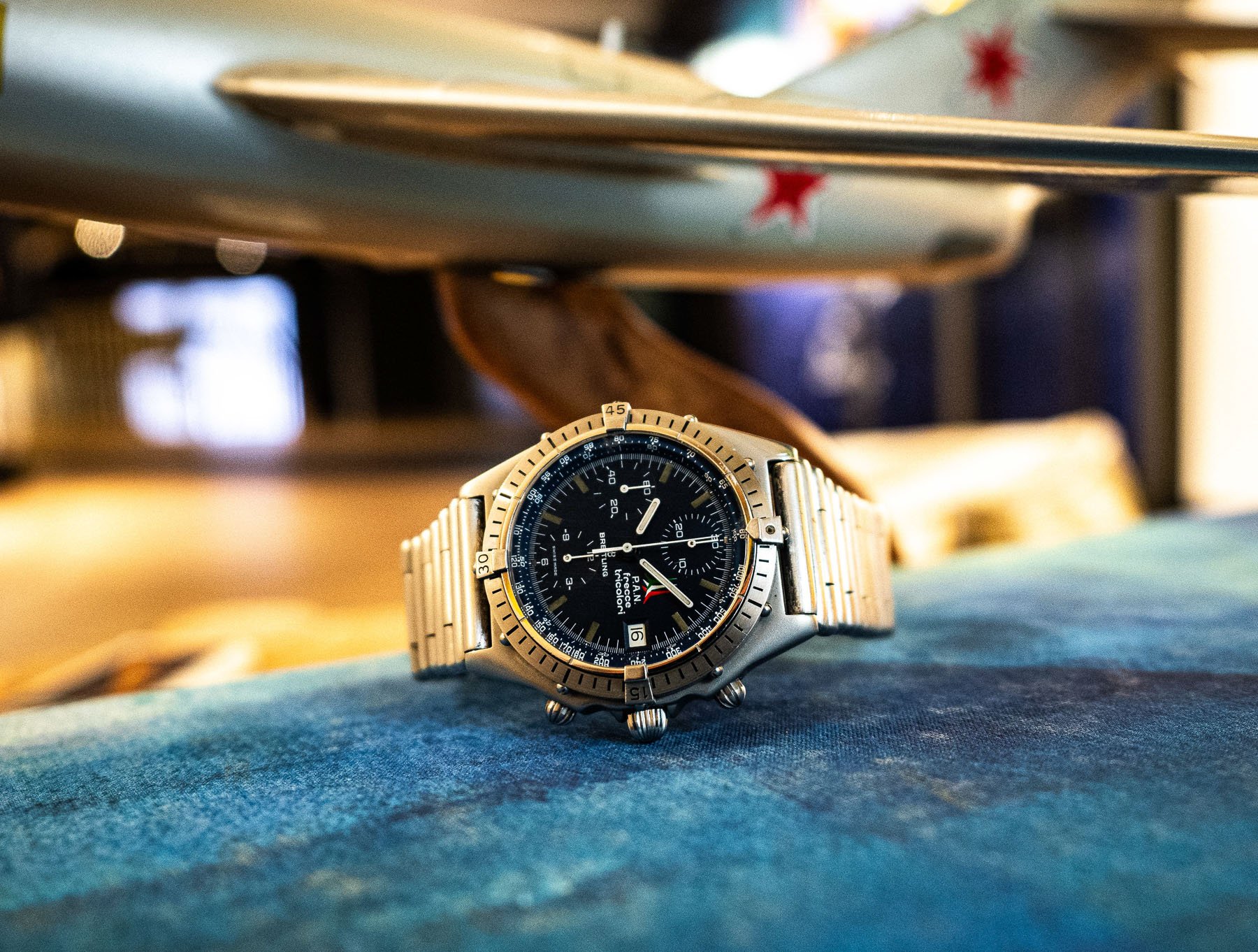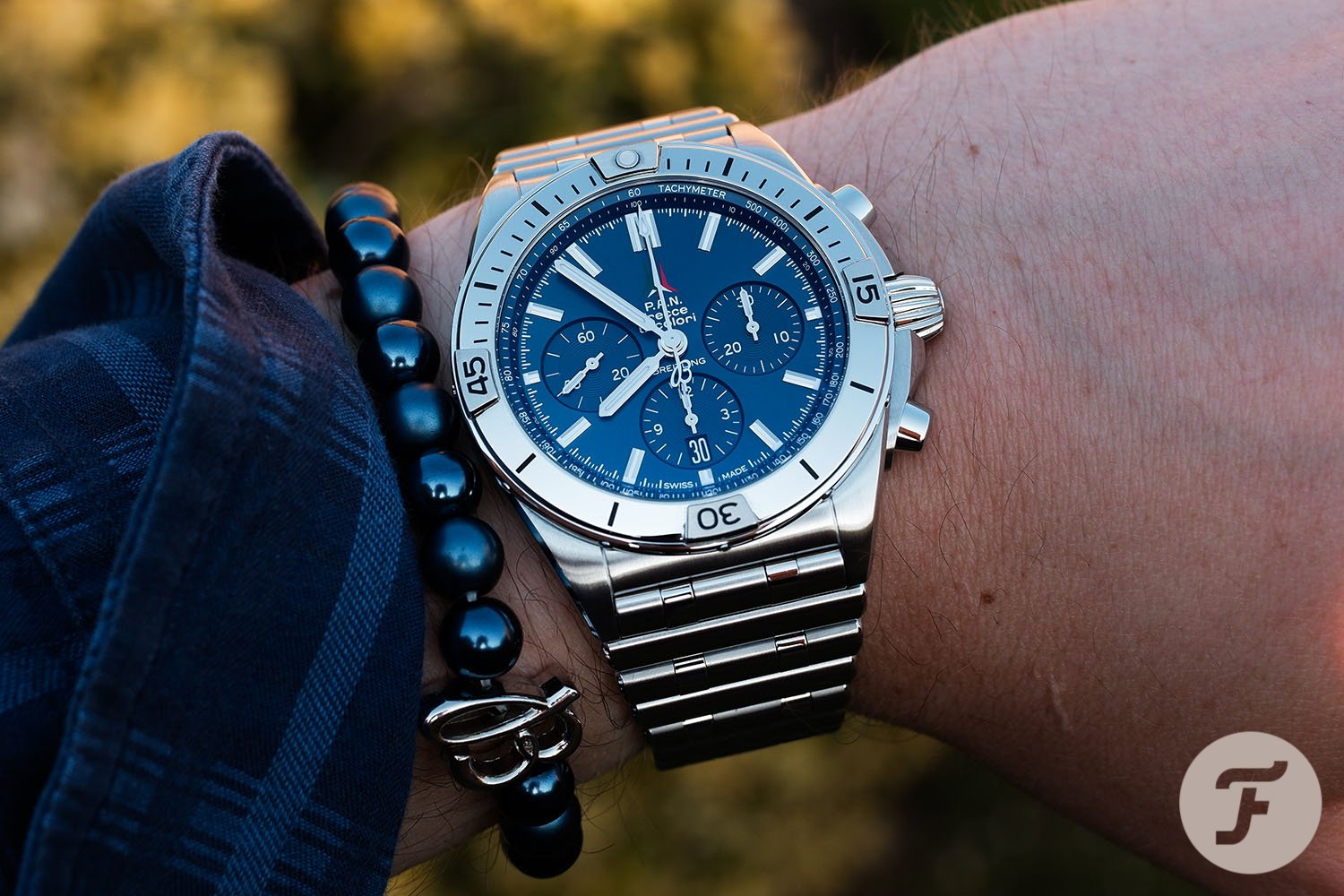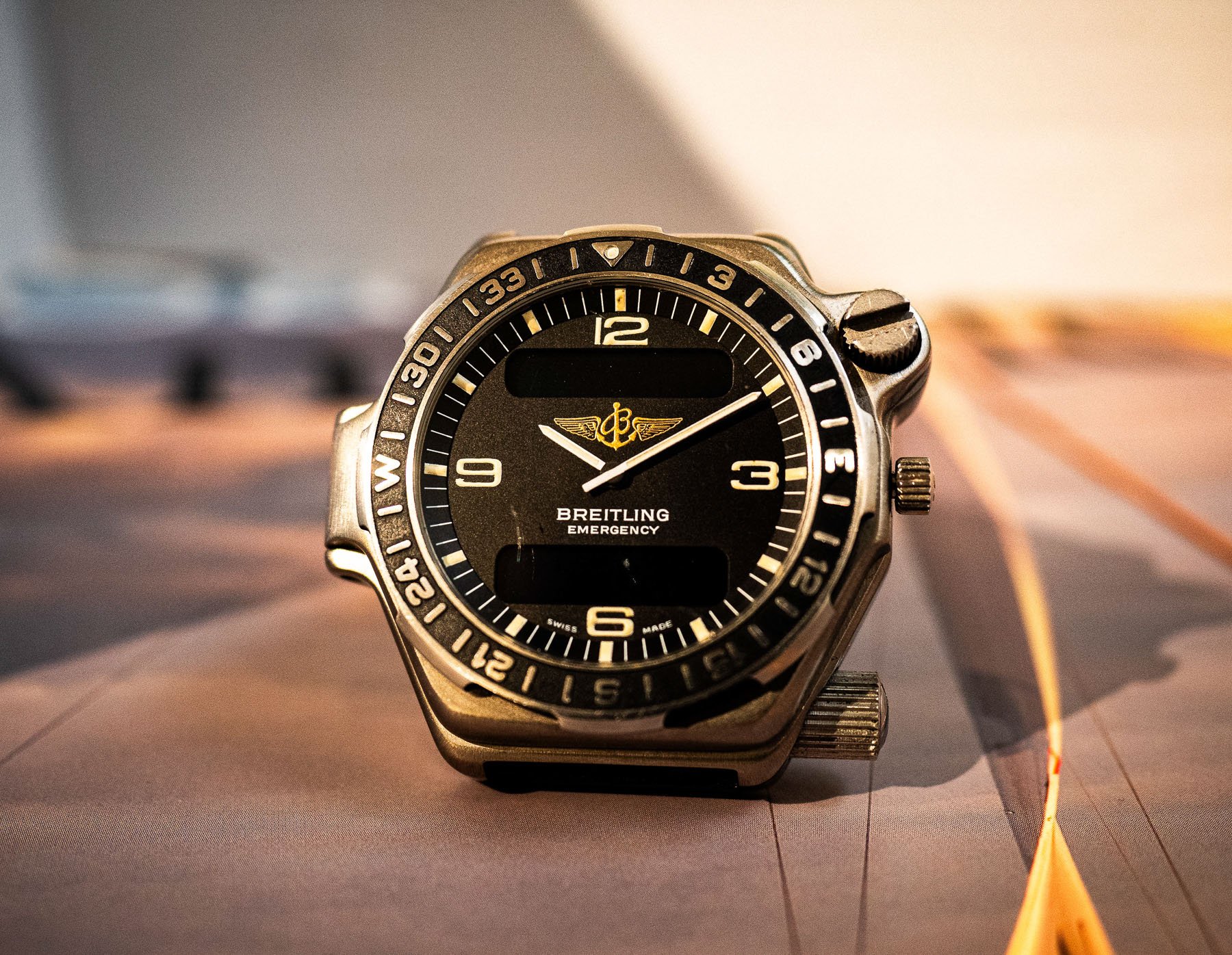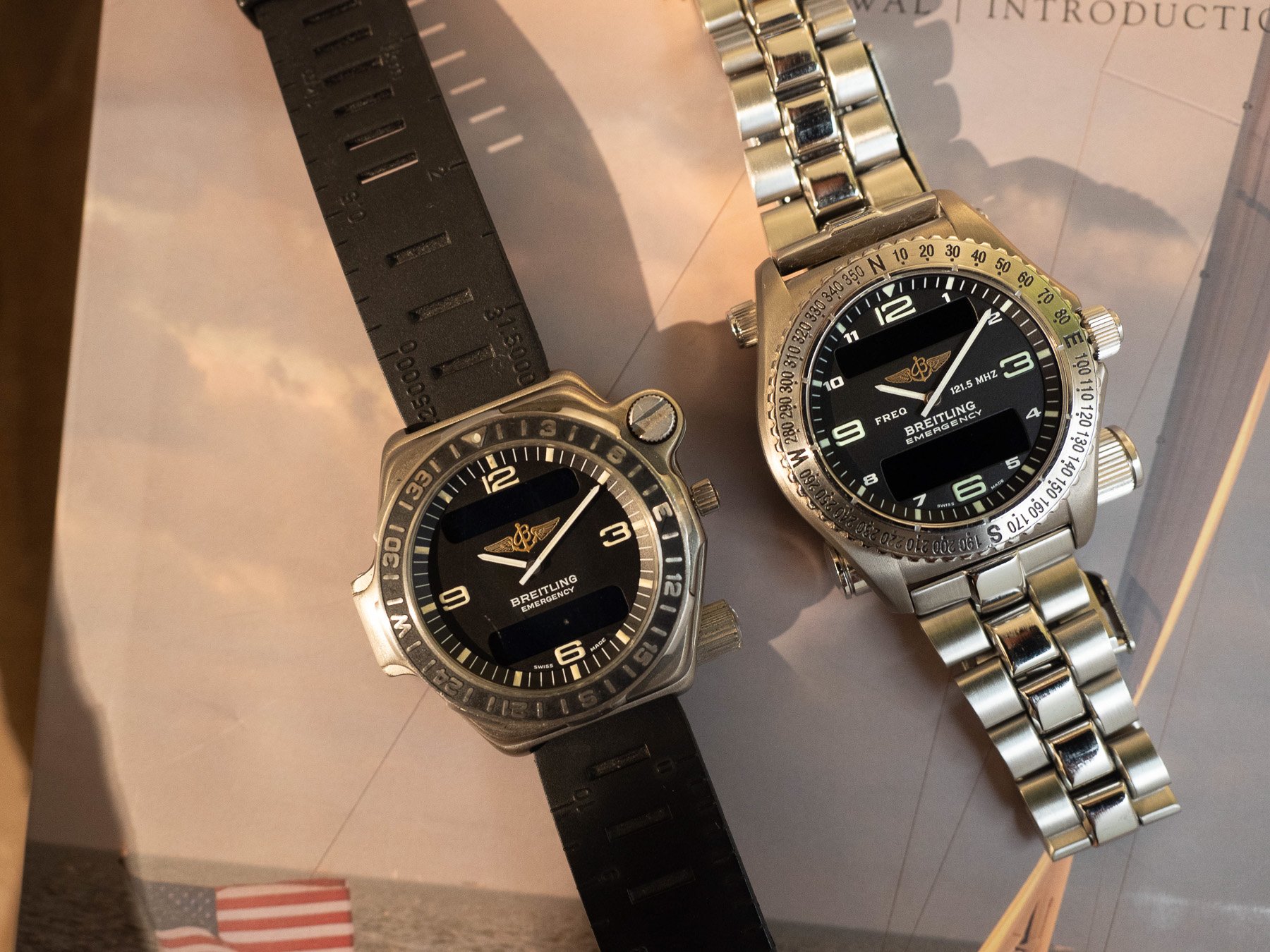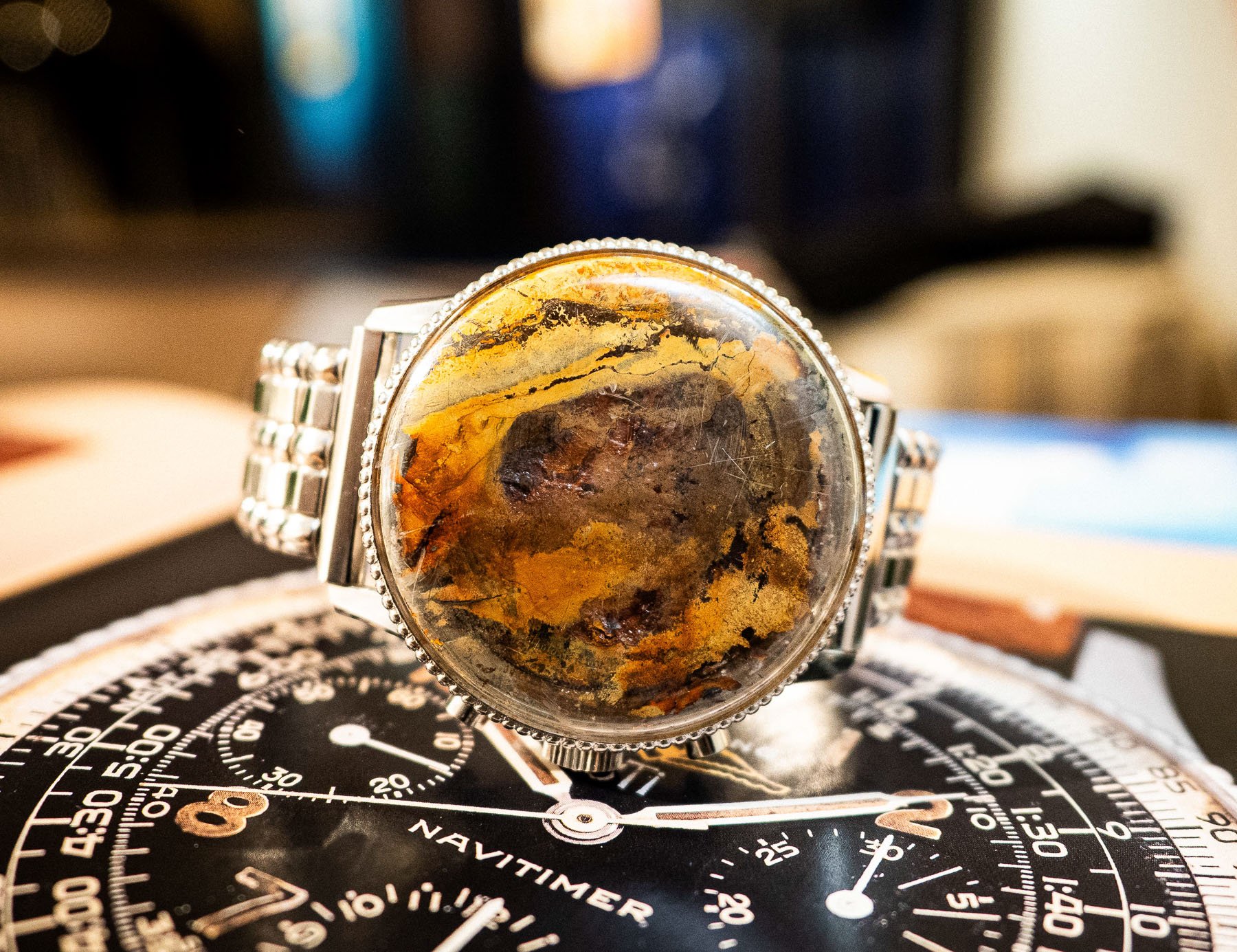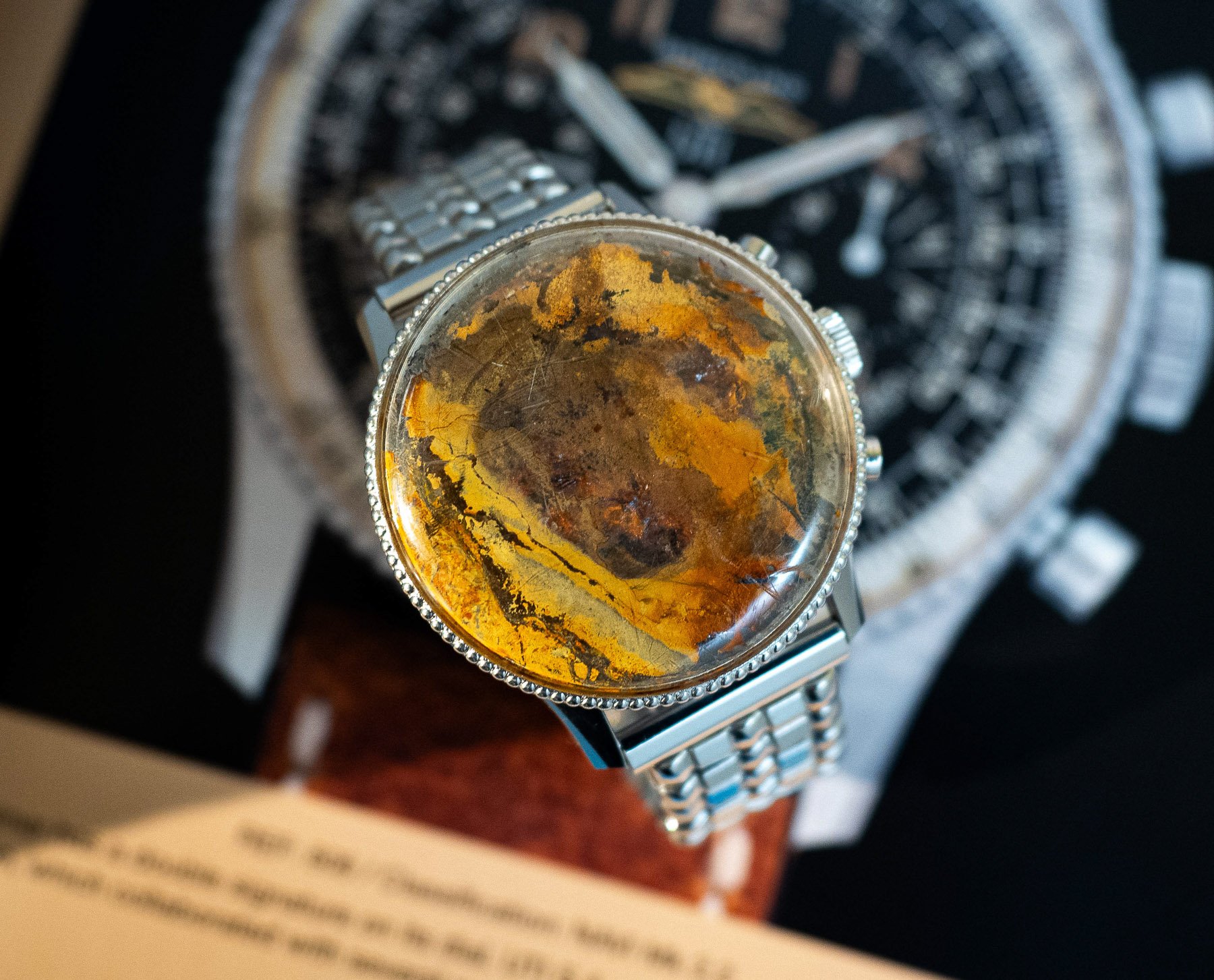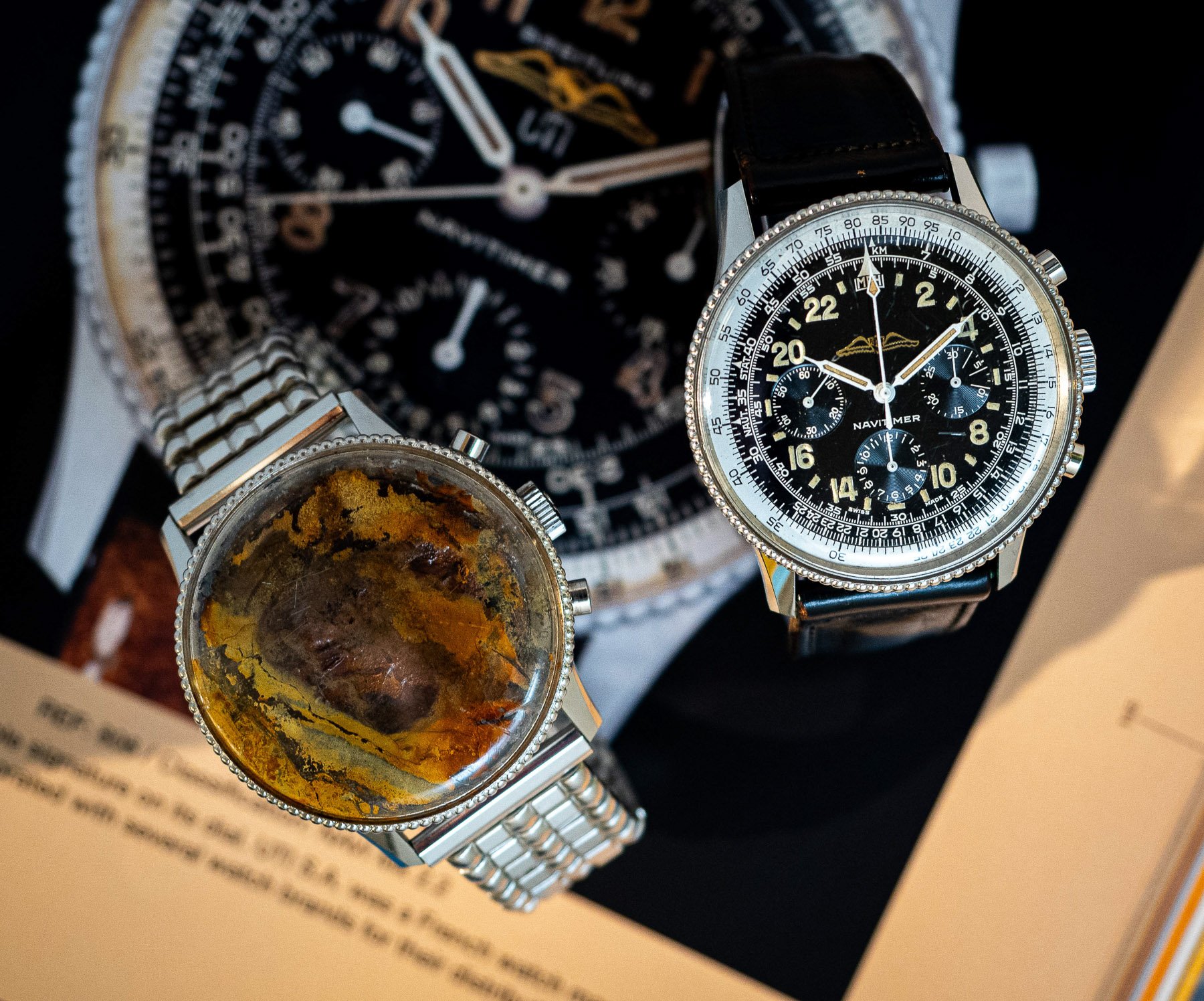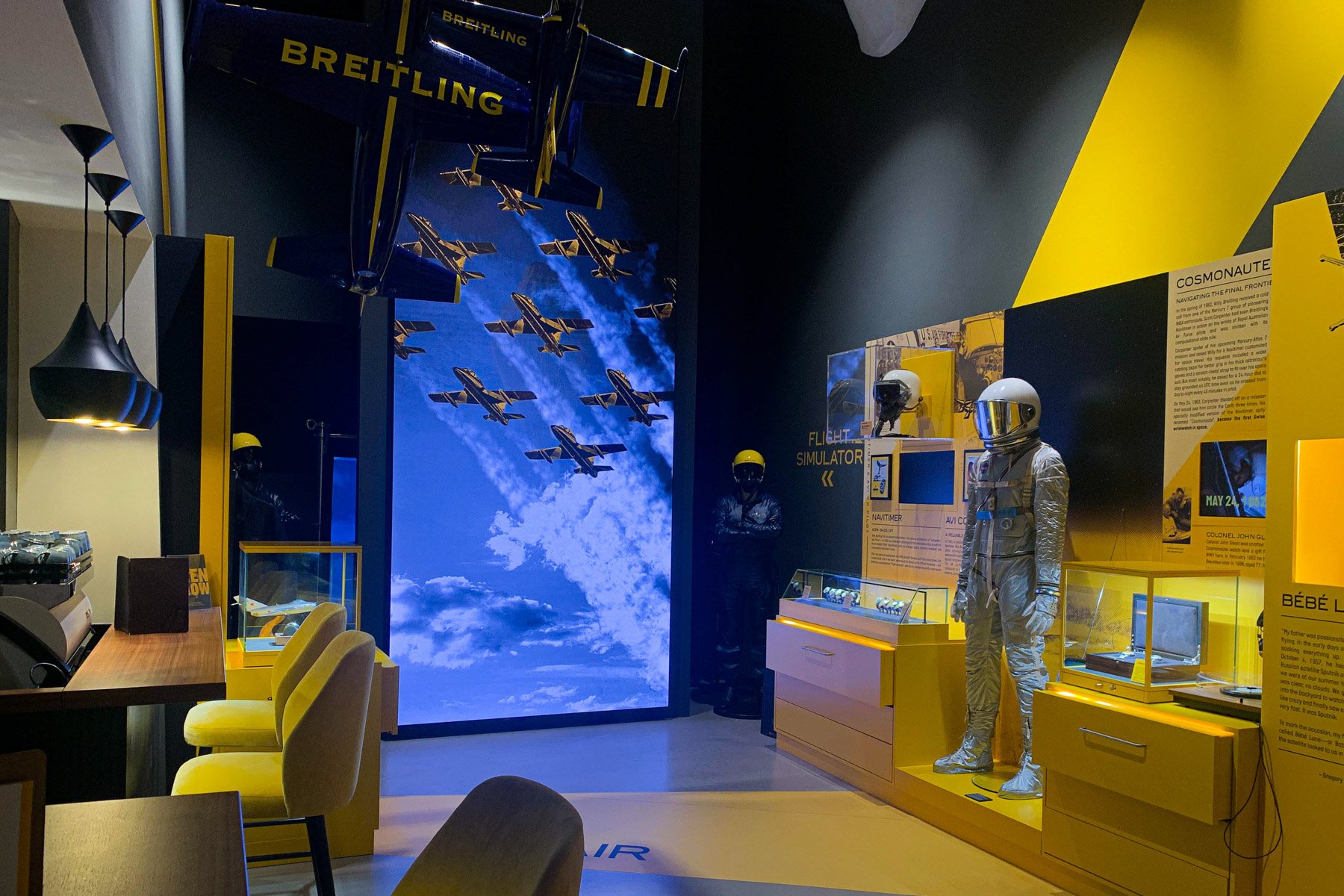The Breitling Pop-Up Museum In Zurich And Why You Should Visit — Chapter 2: Air
On November 30th, Fratello published my first article about Breitling’s pop-up museum in Zurich, which celebrates the brand’s 140th anniversary. In that article, I covered three gems showcased at the museum under one of Breitling’s three universes — Sea. Today, we will cover three essential pieces of Breitling’s next universe — Air. Be sure to stick around for the last watch; it rises above anything horological (no pun intended!).
The historical link with aviation
Historically, Breitling has put a heavy emphasis on Air since the 1930s, notably creating onboard instruments under the Huit Aviation line for pilots of the Allied forces. Fun fact: huit, meaning “eight” in French, stands for the power reserve of these onboard instruments, which were designed to stay running for longer than a week. In the early 1950s, a few years after WWII ended, the AOPA (Aircraft Owners and Pilots Association) commissioned the Navitimer, the production of which began in 1952. The quintessential utilization of the E6B slide rule lent the Navitimer a unique aesthetic that quickly became a classic. Today, the Navitimer stands proudly as Breitling’s flagship model, and many consider it one of the most iconic watches ever.
Schneider-era aviation
At the end of the Quartz Crisis, Ernest Schneider, the president of the Sicura watch company, purchased Breitling. Schneider was famously a huge lover of all things aviation, so it’s hardly surprising that Breitling was an interesting brand for him. Ernest Schneider vigorously captivated the aviation segment, which was crucial for the brand’s survival at the time. While many brands went for quartz movements to offer low price points, Schneider’s strategy was to create “instruments for professionals” (the brand’s slogan at the time) to speak to an audience that still longed for tool watches. Decades later, under Georges Kern’s leadership, Breitling has returned to the three universes with an equal emphasis today. Considering this history, there is naturally plenty to speak about when it comes to Air.
Breitling Frecce Tricolori, 1983
Released in 1983, the new Chronomat, first coined the Breitling Frecce Tricolori, was a crucial watch to reinvigorate the brand’s connection to aviation. Being purely utilitarian wasn’t enough. Breitling needed to establish a partnership with globally loved and respected institutions. The Italian Air Force’s aerobatic demonstration team, the Frecce Tricolori, was the ideal partner. Deeply involved in aviation, Ernest Schneider already had a connection with the Frecce Tricolori and personally proposed creating a watch for the legendary aerobatics unit.
Creating a new icon
Naturally, as the focus group was Italians, the proposed chronograph needed to be stylish both on and off duty. Thus, the design of this Frecce Tricolori timepiece had a perfect blend of function and style. The four quintessential rider tabs protected the sapphire crystal, while the Rouleaux bracelet had a look unlike any other on the market. This avant-garde design, combined with the utilitarian execution, was graciously accepted by the Frecce Tricolori.
The popularity of the Frecce Tricolori unit trickled down to the market in the form of the new Chronomat, which celebrated Breitling’s centennial a year later in 1984. Whereas the original Chronomat stood for “chronograph for mathematicians”, the new Chronomat stood for “chronograph automatic.” Using a mechanical movement for this watch was a bold move in the ’80s. Many brands at the time were opting for quartz movements, which they saw as the future of watchmaking. Consequently, the newly born Chronomat became a massive success and a cornerstone in Breitling’s catalog.
Back to the roots with the 2020 Chronomat
The Breitling Chronomat has seen various aesthetic updates throughout the years, most notably in 2009 upon the release of Breitling’s first in-house B01 caliber. Under Kern’s leadership, Breitling brought the Chronomat back to the design that initially made it so universally loved. The Rouleaux bracelet, the rider tabs, and the pragmatic dial returned, making today’s Chronomat one of Breitling’s most successful models once again.
Breitling Emergency Prototype, 1988
One of the most interesting pieces in the Breitling Museum has got to be this incredible Emergency prototype from 1988. Without going into too much detail about the Emergency line, it is, to this day, the only watch that can save your life by sending a distress signal with its emergency beacon. The example you see here is a prototype dating back seven years before the serial production of the Breitling Emergency.
The idea of the Emergency was famously born during a NATO conference in the mid-1980s. Ernest Schneider had spoken about the idea of a locator beacon housed inside a wristwatch. This was crucial because, given certain circumstances, pilots could be separated from their aircraft. This would naturally necessitate a locator beacon on the pilot’s person for them to be located. Following this conference, and by partnering up with the French company Dassault Electronique, which would engineer the beacons, the idea of the Emergency came to fruition.
Instruments for professionals
Bold ideas like the Breitling Emergency are what helped Breitling weather the storm of the Quartz Crisis. As mentioned previously, “instruments for professionals” was the slogan, and I can’t think of a more appropriate wristwatch than the Breitling Emergency to serve as an ambassador for this phrase. Seeing this Emergency prototype is most definitely worth visiting the Breitling Museum as it is the foundation of what ended up being one of the most distinct watches in the industry. According to Breitling historian Fred Mandelbaum, only two of these prototypes are believed to exist.
Scott Carpenter’s Breitling Navitimer Cosmonaute – The first Swiss wristwatch in space, 1962
Usually, I wouldn’t say this as “importance” is primarily subjective in the realm of watches, but this Breitling Cosmonaute is undoubtedly the highlight of the Breitling Museum here in Zurich. I would go so far as to say that this watch transcends all things horological and stands mainly as an artifact that helped push the boundaries of human capabilities. In 1962, Scott Carpenter flew into space aboard the Aurora 7 spacecraft to observe the reaction of certain fluids in microgravity conditions and to take photographs of meteorological sensations on Earth. Before the computer, people relied on things like pencils, paper, and wristwatches to help them fly through the skies into outer orbit and land safely back on Earth.
A watch created according to Scott Carpenter’s specifications
Scott Carpenter approached Breitling to create a pilot’s chronograph with a 24-hour movement (and dial), a 42mm case diameter, and a bracelet that could fit around his space suit’s sleeve. Willy Breitling, the space lover and businessman he was, happily obliged. Thus, a Breitling Navitimer bearing the AOPA logo with “Cosmonaute” beneath it was created.
Sadly, those elements aren’t legible on Scott Carpenter’s watch. That’s because the dial was compromised upon landing in the Atlantic Ocean and being exposed to salt water for roughly three hours. What we have now is an illegible Cosmonaute that, dare I say, has quite a beautiful orange/terracotta hue across the dial and crystal. The hands are barely visible, and small portions of the dial still show the scales seen on Navitimer Cosmonaute dials.
A special line within Breitling’s catalog
Conveniently, the museum presents Scott Carpenter’s example beside astronaut John Glenn’s Cosmonaute, showing what Scott’s watch would look like if undamaged. Since the Cosmonaute’s initial release, it has always been a special model within Breitling’s collection as a variation of the Navitimer. Being a manual-wind timepiece with a rare dial configuration, it would tug at watch enthusiasts’ and space nerds’ heartstrings. Today, the Cosmonaute is not in the standard catalog and is released only in limited quantities for special commemorations. Of all the watches in the museum, this was the only one that induced goosebumps upon my initial discovery.
A truly unique experience
Like the last chapter, this article provides but a sneak peek into Breitling’s vibrant history around Air. Over 80 historically significant watches are showcased across Breitling’s Air, Land, and Sea core collections. Despite all the incredible pieces, Breitling’s intention is not only to show historically significant watches but also to offer an all-around unique experience. After all, it might be the only place to enjoy vintage watches, fly over Zurich in a flight simulator, and down a delicious burger all in a single visit. Given the opportunity, I encourage everyone to visit the Breitling Museum (free admission!). As things stand, it will stay open until the end of April 2025.

